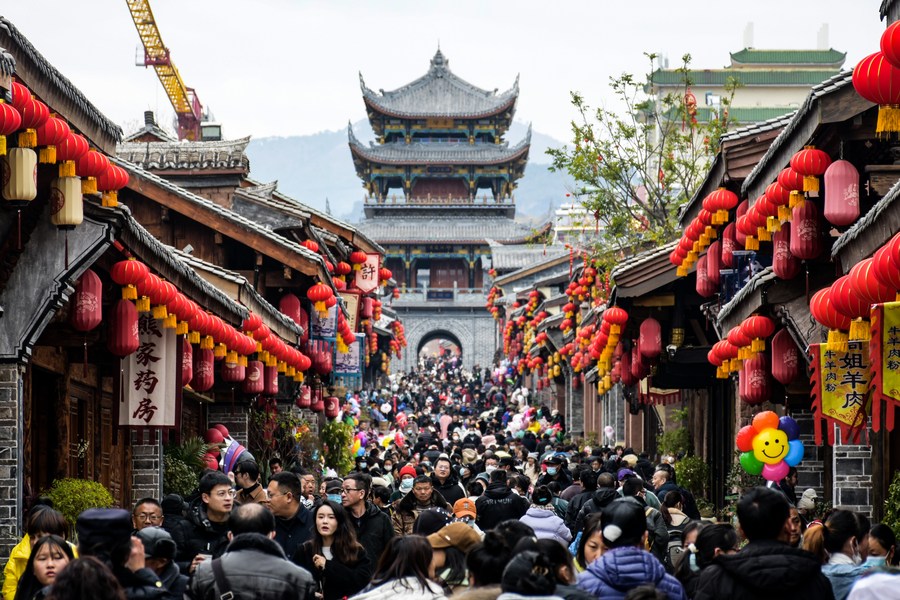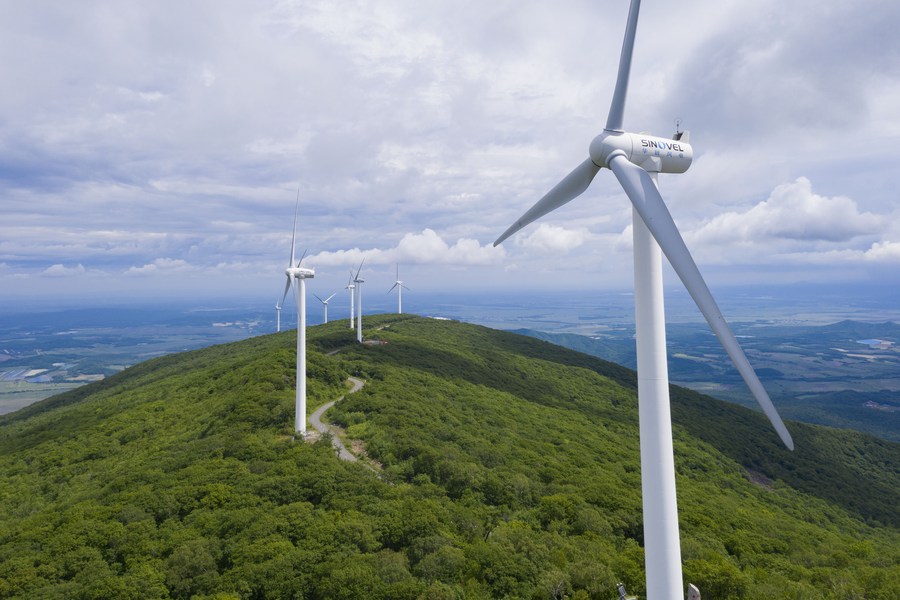Published: March 06,2023

China aims to achieve a faster economic growth of around 5 percent with better quality of development in 2023, as the world’s second-largest economy gathers pace to build up recovery momentum and push ahead with its modernization drive.
The projected target, higher than the 3-percent growth recorded in the country’s gross domestic product (GDP) last year, is one of the key objectives for development laid out in the government work report delivered by Premier Li Keqiang to the national legislature, which began its annual session Sunday.
The world is closely watching for new policy moves on China’s development, as national lawmakers and political advisors convene for the first annual gathering since the 20th National Congress of the Communist Party of China (CPC) in October last year. Meanwhile, the country’s quick recovery from COVID-19 has raised hopes for wider growth globally, adding to the significance of the event.
Delivering steady and quality growth is key to realizing the CPC’s grand blueprint for building a great modern socialist country by the middle of this century.
“It is imperative to maintain reasonable long-term economic growth while ensuring better quality and efficiency and to sustain our miraculous achievements of fast economic growth and long-term social stability,” as the 20th CPC National Congress envisaged increasing the country’s per capita GDP to be on par with that of a mid-level developed country by 2035, according to a separate report submitted Sunday by the National Development and Reform Commission (NDRC), the top economic planner.
The growth target of around 5 percent “is necessary to ensure stable growth, employment and prices,” according to the NDRC report on the implementation of the 2022 plan for national economic and social development and on the 2023 draft plan for national economic and social development.
“It will be a positive signal to the market and will bolster confidence, guide expectations, expand employment, improve living standards, and prevent and defuse risks while pursuing development,” the NDRC report said.
This year’s GDP target is also consistent with the growth potential of the Chinese economy at present and with the capability of resources and production factors to support the economy, according to the report.
“For China, 2023 is a year of economic comeback,” said Liu Shouying, dean of the School of Economics at Renmin University of China.
While the annual GDP target is an appropriate growth pace required to stabilize expectations and economic expansion, it has indicated that the Chinese economy will continue to focus on high-quality development, Liu said.

People visit Jianchang ancient city during the Spring Festival holiday in Xichang, southwest China’s Sichuan Province, on Jan. 27, 2023. (Photo by Li Jieyi/Xinhua)
REVIVING GROWTH
China’s economy is staging a steady recovery, with marked improvement in consumer demand, market distribution, industrial production and business expectations, the premier said, noting that the economy is demonstrating vast potential and momentum for further growth.
The recovery can be seen and felt in the scenes of busy roads, crowded cinemas and restaurants, and shopping sprees both online and in stores. The latest official data showed that manufacturing activity has returned to the highest level in more than a decade, foreign investment growth rebounded, and monthly new bank lending surged more than expected.
While acknowledging past achievements, Li cautioned of difficulties and challenges confronting the economy, including rising uncertainties in the external environment, insufficient domestic demand, and risks and hidden dangers in the real estate market.
It is important to “give priority to ensuring stable growth, employment and prices” this year, Li told lawmakers.
This year, China aims to create around 12 million new urban jobs, with a surveyed urban unemployment rate of around 5.5 percent, according to the government work report. Other annual objectives include keeping the consumer price index increase at around 3 percent and grain output above 650 million tonnes.
The government work report unveiled a raft of measures to shore up growth this year. They include a projected deficit-to-GDP ratio of 3 percent, 0.2 percentage points higher than the level last year, and 3.8 trillion yuan (about 549.8 billion U.S. dollars) of special-purpose bonds to be allocated to local governments.
The report also called for making the prudent monetary policy targeted and forceful, noting that the M2 money supply and aggregate financing should increase generally in step with nominal economic growth to support the real economy.
To expand domestic demand, China will prioritize the recovery and expansion of consumption, the report said, noting that the incomes of urban and rural residents will be boosted through multiple channels.
“China’s economy will turn for the better on the whole and its growth rate is more likely than not to reach a normal level,” said economist Yu Miaojie, president of Liaoning University and a national legislator.
International institutions and investment banks have raised their predictions for China’s growth this year. The International Monetary Fund lifted in late January its forecast for China’s growth in 2023 to 5.2 percent, up from a previous prediction of 4.4 percent.

This aerial photo taken on June 19, 2022 shows wind turbines in a forest park in Raohe County, northeast China’s Heilongjiang Province. (Xinhua/Xie Jianfei)
QUALITY MATTERS
While giving weight to economic growth, the Chinese government will not seek growth at all costs. Instead, it wants a greener and more efficient economy.
While delivering the government work report, Li once again underscored efforts to pursue high-quality development, outlining policy priorities such as accelerating the modernization of the industrial system and promoting the transition to a green development pattern.
China aims to reduce energy consumption per unit of GDP by around 2 percent this year and “will strive for better results in actual work,” according to the NDRC report.
It unveiled the objectives of continued reductions in the discharge of major pollutants, stronger control over the consumption of fossil fuels, and steady improvements in the natural environment.
On boosting the country’s technology strength, Li urged pooling quality resources and making concerted efforts to achieve breakthroughs in core technologies in key fields. He also called for efforts to make traditional industries and small and medium-sized enterprises more advanced, smarter, and more eco-friendly.
In the face of severe challenges brought by rising protectionism and the COVID-19 flareups in the past few years, China has avoided overreliance on investment as a means of boosting economic growth but stayed focused on helping market entities overcome difficulties and grow.
“We have taken decisive measures to step up macro policy support while refraining from adopting a deluge of strong stimulus policies that would eat into our potential for future growth,” Li said.
High-quality development is deemed “the first and foremost” task in China’s modernization endeavor. President Xi Jinping has stressed that instead of taking GDP growth as the sole criterion for success, China is now focusing more on improving the quality and efficiency of growth.
As part of the better quality of development, China has seen increased spending on research and development in the past five years, with reduced energy intensity and carbon emissions, according to the government work report.
“A modern China should be one with high-quality development,” said Han Baojiang, director of the economics department of the National Academy of Governance and a national political advisor.
“Only by placing equal emphasis on growth and quality and creating a strong synergy for high-quality development can we build a solid economic foundation for Chinese modernization,” Han said.
source: Xinhua
 Africa -China Review Africa -China Cooperation and Transformation
Africa -China Review Africa -China Cooperation and Transformation
